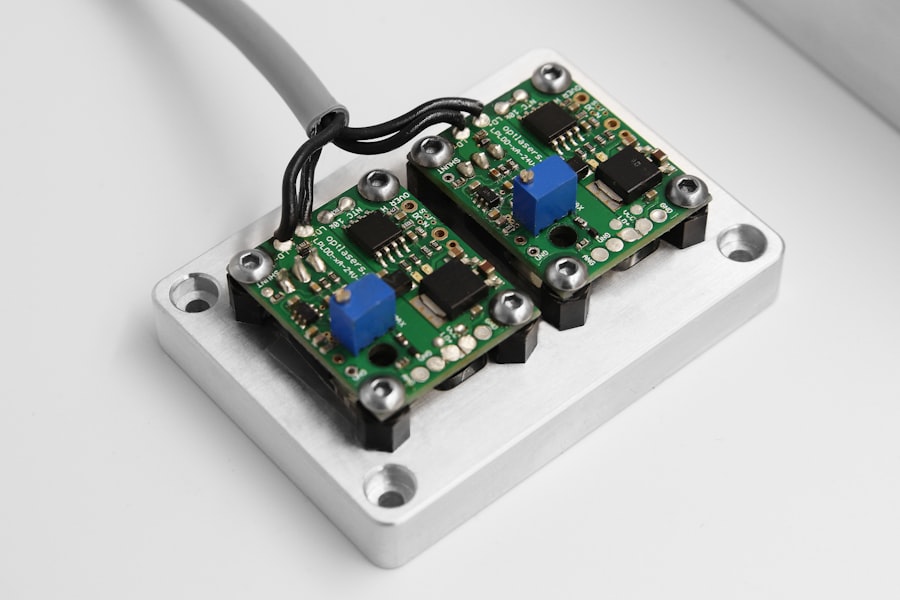Laser hair removal is a popular cosmetic procedure that uses a concentrated beam of light (laser) to remove unwanted hair. The laser emits a light that is absorbed by the pigment (melanin) in the hair. This light energy is converted to heat, which damages the hair follicles, inhibiting future hair growth. The procedure is commonly used to remove hair from the face, legs, arms, underarms, bikini line, and other areas.
The process of laser hair removal involves several sessions, as hair grows in different stages and the treatment is most effective when the hair is in the active growth phase. The number of sessions required varies depending on the individual’s hair color, skin color, and the area being treated. It is important to note that laser hair removal is not permanent, but it can significantly reduce hair growth and the need for regular shaving or waxing.
Laser hair removal is a non-invasive procedure that is generally well-tolerated, with minimal discomfort. However, it is important to seek treatment from a qualified and experienced professional to minimize the risk of side effects and ensure optimal results. Overall, laser hair removal offers a convenient and effective solution for long-term hair reduction.
Key Takeaways
- Laser hair removal uses concentrated light to target and destroy hair follicles, resulting in long-term hair reduction.
- Electrolysis is a method of hair removal that uses an electric current to destroy the hair follicle, providing permanent results.
- Laser hair removal is effective for larger areas of the body and is generally faster than electrolysis.
- Electrolysis is more time-consuming and is best suited for smaller areas or for individuals with light or fine hair.
- Laser hair removal may cause redness, swelling, and pigmentation changes, but these side effects are usually temporary and mild.
Understanding the Basics: Electrolysis
Electrolysis is a method of hair removal that uses an electric current to destroy the hair follicle, preventing future hair growth. During the procedure, a tiny probe is inserted into the hair follicle, and an electrical current is applied to the follicle to destroy it. Electrolysis can be used to remove hair from various parts of the body, including the face, arms, legs, and bikini line.
Unlike laser hair removal, electrolysis is considered a permanent hair removal solution. This is because it targets individual hair follicles, making it effective for all hair colors and skin types. However, electrolysis typically requires multiple sessions to achieve optimal results, as each hair follicle must be treated individually.
Electrolysis is a precise and time-consuming procedure that requires skill and expertise to perform effectively. It is important to seek treatment from a licensed and experienced electrologist to ensure safety and minimize the risk of complications. While electrolysis may be more time-consuming than laser hair removal, it offers a permanent solution for those seeking long-term hair removal.
Effectiveness and Efficiency: Laser Hair Removal
Laser hair removal is known for its effectiveness in reducing unwanted hair growth. The procedure targets multiple hair follicles at once, making it a relatively quick and efficient option for large treatment areas such as the legs or back. While multiple sessions are required for optimal results, many individuals experience significant hair reduction after just a few treatments.
The effectiveness of laser hair removal can vary depending on factors such as skin color, hair color, and the area being treated. Dark, coarse hair on light skin tends to respond best to treatment, while lighter hair colors may require more sessions to achieve desired results. Overall, laser hair removal offers a high level of effectiveness for long-term hair reduction.
In terms of efficiency, laser hair removal offers a convenient solution for those seeking to reduce the need for regular shaving or waxing. While electrolysis targets individual follicles, laser hair removal can treat multiple follicles at once, making it a faster option for larger treatment areas. This makes laser hair removal an efficient choice for individuals with busy lifestyles who are seeking long-term hair reduction.
Effectiveness and Efficiency: Electrolysis
| Metrics | Value |
|---|---|
| Electrolysis Efficiency | 80% |
| Energy Consumption | 2.5 kWh/g |
| Hydrogen Production Rate | 10 kg/day |
| Conversion Efficiency | 85% |
Electrolysis is widely regarded as a highly effective method of permanent hair removal. Unlike laser hair removal, which targets pigment in the hair follicle, electrolysis can effectively treat all hair colors and skin types. This makes it a versatile option for individuals with varying hair and skin characteristics.
While electrolysis is highly effective in permanently removing unwanted hair, it is important to note that the procedure typically requires multiple sessions to achieve optimal results. This is because each individual hair follicle must be treated separately, making electrolysis a time-consuming process. However, the permanent nature of electrolysis makes it a highly effective solution for those seeking long-term hair removal.
In terms of efficiency, electrolysis may be more time-consuming than laser hair removal due to its precise nature. The procedure targets individual follicles, making it ideal for smaller treatment areas such as the face or underarms. While it may require more time and patience, electrolysis offers a permanent solution for those seeking to eliminate unwanted hair growth.
Safety and Side Effects: Laser Hair Removal
Laser hair removal is generally considered safe when performed by a qualified and experienced professional. However, like any cosmetic procedure, there are potential side effects to be aware of. Common side effects of laser hair removal may include temporary redness, swelling, and discomfort in the treated area. In some cases, changes in skin pigmentation or blistering may occur, but these side effects are typically rare and temporary.
It is important to follow pre- and post-treatment care instructions provided by the practitioner to minimize the risk of side effects. This may include avoiding sun exposure before and after treatment and using sunscreen to protect the treated area. Overall, laser hair removal is a safe procedure with minimal risk of side effects when performed by a skilled professional.
Safety and Side Effects: Electrolysis

Electrolysis is generally considered a safe method of permanent hair removal when performed by a licensed and experienced electrologist. The procedure involves inserting a tiny probe into each individual hair follicle, which carries a small risk of infection or scarring if not performed properly. However, when performed by a skilled professional using proper sterilization techniques, the risk of complications is minimal.
Common side effects of electrolysis may include redness, swelling, and temporary discomfort in the treated area. In some cases, minor scabbing or skin irritation may occur, but these side effects typically resolve within a few days. It is important to follow post-treatment care instructions provided by the electrologist to minimize the risk of side effects and promote optimal healing.
Overall, electrolysis is considered a safe and effective method of permanent hair removal with minimal risk of side effects when performed by a qualified professional.
Cost and Considerations: Laser Hair Removal vs Electrolysis
When considering laser hair removal vs electrolysis, cost is an important factor to take into account. Laser hair removal typically requires multiple sessions for optimal results, which can make it more expensive than electrolysis in the short term. However, many individuals find that the long-term reduction in shaving or waxing expenses justifies the initial investment in laser hair removal.
On the other hand, electrolysis may be more cost-effective in the long run due to its permanent nature. While it may require more sessions upfront compared to laser hair removal, electrolysis offers a permanent solution for those seeking to eliminate unwanted hair growth. This can result in long-term savings on grooming expenses over time.
In addition to cost considerations, it is important to take into account factors such as skin type, hair color, and treatment area when choosing between laser hair removal and electrolysis. Laser hair removal may be more suitable for larger treatment areas with dark, coarse hair on light skin, while electrolysis offers a versatile solution for individuals with varying hair and skin characteristics.
Ultimately, both laser hair removal and electrolysis offer effective solutions for long-term hair reduction, and the choice between the two will depend on individual preferences, budget considerations, and desired outcomes. It is important to consult with a qualified professional to determine the most suitable option based on individual needs and goals.
If you’re considering laser hair removal or electrolysis, it’s important to understand the key differences between the two methods. While laser hair removal uses concentrated light to target hair follicles, electrolysis involves the use of a fine needle to destroy individual hair follicles. To learn more about the safety of laser hair removal for teens and the latest advancements in laser technology, check out this informative article on Is Laser Hair Removal Safe for Teens?. It provides valuable insights into the considerations for younger individuals seeking hair removal treatments.
FAQs
What is laser hair removal?
Laser hair removal is a cosmetic procedure that uses a concentrated beam of light (laser) to remove unwanted hair. The laser targets the pigment in the hair follicles, heating and damaging them to inhibit future hair growth.
What is electrolysis?
Electrolysis is a method of hair removal that uses an electric current to destroy the growth center of the hair follicle. A fine probe is inserted into the hair follicle and the electric current is applied to destroy the follicle’s ability to grow new hair.
What’s the difference between laser hair removal and electrolysis?
The main difference between laser hair removal and electrolysis is the method used to target and destroy the hair follicles. Laser hair removal uses a concentrated beam of light to target the pigment in the hair follicles, while electrolysis uses an electric current to destroy the growth center of the hair follicle.
Which method is more effective?
Both laser hair removal and electrolysis are effective methods of hair removal, but their effectiveness can vary depending on factors such as hair color, skin color, and the area being treated. Laser hair removal is generally more effective for larger areas with darker, coarser hair, while electrolysis is better suited for smaller areas and lighter, finer hair.
Which method is more suitable for me?
The suitability of laser hair removal or electrolysis depends on individual factors such as hair color, skin color, and the area being treated. It is recommended to consult with a qualified practitioner to determine the most suitable method for your specific needs.






